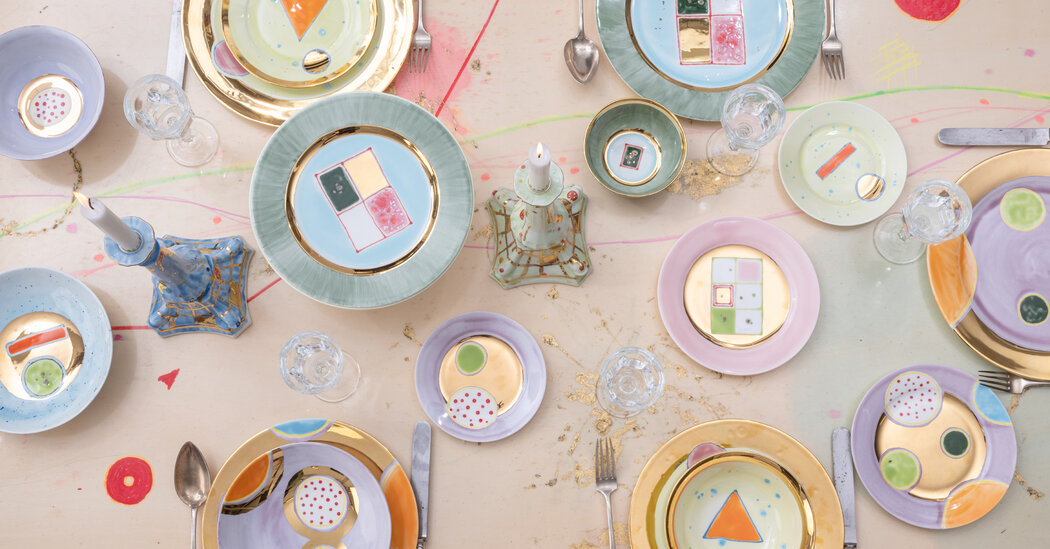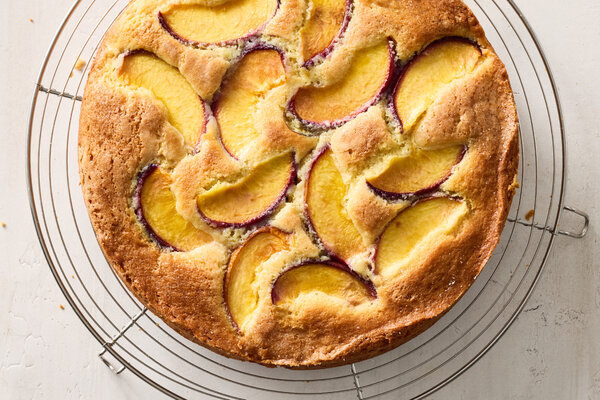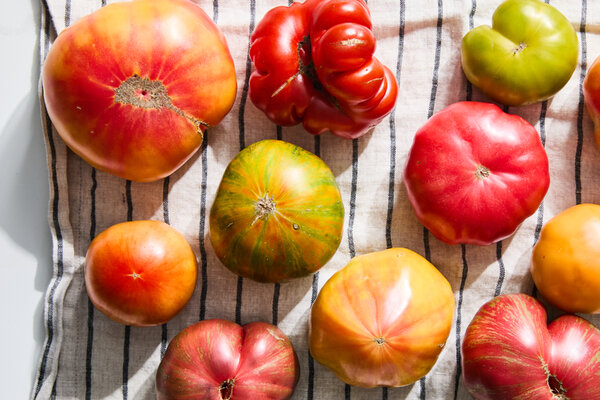This article is part of our Design special section about how food inspires designers to make and do surprising things.
The earliest dining appliance was a pair of cupped hands. Then came folded leaves; then vessels and utensils shaped from stone, earth and metal. Today, the style, substance and uses of tableware have proliferated beyond imagining — a veritable smorgasbord of rounded, flattened, speared and woven variations on the theme of nourishment.
What follows are several delectable products that recently caught our eye.
The Designer Who Cried Woolf
The Thursday Night Gatherings tablecloth by Pablo Di Francesco, a London textile designer, is a tribute to soirees held by members of the Bloomsbury Group in the early 20th century. “The colors draw inspiration from their artistic and literary creations,” he noted, “celebrating the beauty that emerges during a night shared with good company.” The organic cotton tablecloth comes in two sizes and prices: medium (58 by 99 inches) for £310 (about $416), and large (58 by 126 inches) for £420 (about $563). Three percent of all profits are donated to local charities; coloursquatters.com.
Heavenly Metal
The Roman designer and artist Coralla Maiuri conceived her Impressions Gold tableware to dazzle with geometry. Hand-drawn circles, triangles, grids and dots filled with pastels and gilded patches come into exuberant collision. From $78 for the Lime Gold Bread Plate to $358 for the Plum Gold Rim Charger; corallamaiuri.com.
Itza Wood’s Plank boards are made of teak sustainably harvested from the Petén jungle in Guatemala and fabricated by local crafters. They are 30 inches long and 9 inches wide. $148; itzawood.com.
Opening a Bottle Without a Battle
FRAMA, a design company in Copenhagen, recently introduced Ground barware, stainless steel tools twisted to fit comfortably in the hand. Designed by Michael Antrobus, the ergonomic collection includes a corkscrew (shown) for $80 and a bottle opener for $75; us.framacph.com.
The San Francisco designer Tina Frey has added fashionable new colors to her Segment cache boxes: ocean blue, yellow, pink quartz, emerald green and amber. The little pods are made of food-safe resin. Sizes and prices of the boxes shown here range from “tiny” (5.5 inches by 3 inches by 3 inches) for $72 to “medium” (8 inches by 6 inches by 2.5 inches) for $150; tf.design.
Bottoms Up
The Japanese word “kannyu” relates to the cracks that form in the glaze of some ceramics when they cool after firing. “These delicate fissures, born from chance, have long been admired as expressions of singular beauty,” said representatives of Ippin Project, the Brooklyn retailer of the Kannyu sake set. Made in Kanazawa, Japan, the packaged group consists of a 3.77-inch-high glass carafe and a pair of 2.75-inch-high glass cups, all of which have bases adorned with elegantly ruptured gold leaf; $214. Available through ippinproject.com.
Each year during Milan Design Week, Laboratorio Paravicini introduces a new group of hand-painted porcelain tableware at its studio tucked into a courtyard in an ancient quarter of the city. Last month, collaborating with the Berlin-based floral designers Studio Mary Lennox, it displayed Italian Gardens, dishes with regimented cypress trees and topiary that evoke, in the company’s description, “a metaphysical atmosphere in which vegetation sheds its spontaneity to become architecture.” From €50 (about $57) for a bread plate; a set of four dinner plates is €460 (about $525); paravicini.it.
Handle With Carefreeness
The Murray five-piece place setting is stainless steel hand-forged in India with sleek lines and subtly textured handles. The dishwasher-safe utensils come in gold, black and copper finishes. Available from Arhaus for $49 a set; arhaus.com.
Get a Grip
Naming a cabernet decanter Fatto a Mano is a fancy way of saying that it was made by hand. The curved handle of Riedel’s crystal wine vessel is easy to grasp, so it was also made for the hand. And no matter the color of the wine it holds, it’s a treat for the eye as well. $180 at riedel.com.




